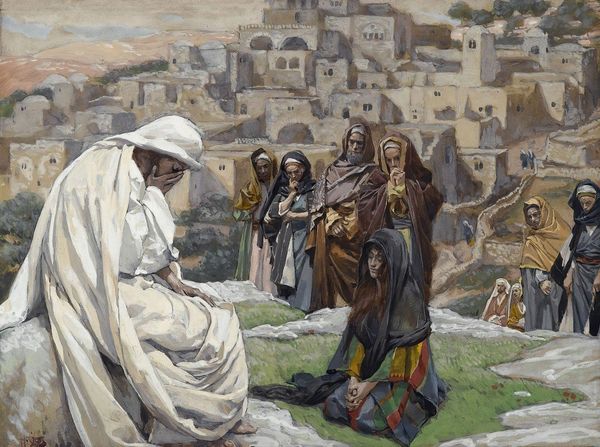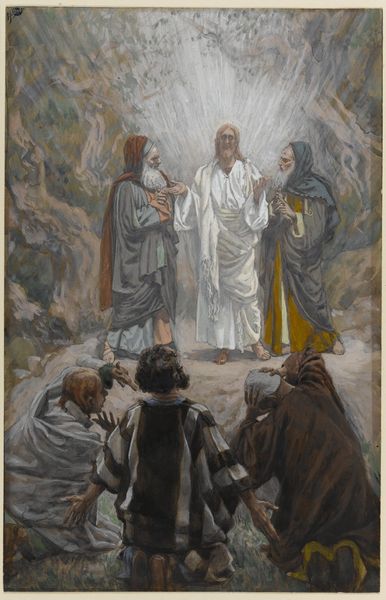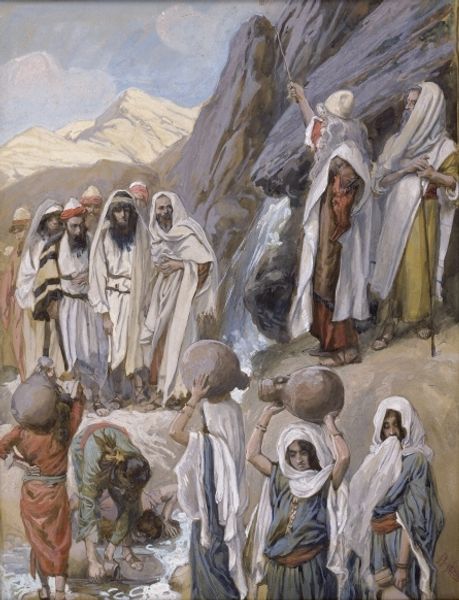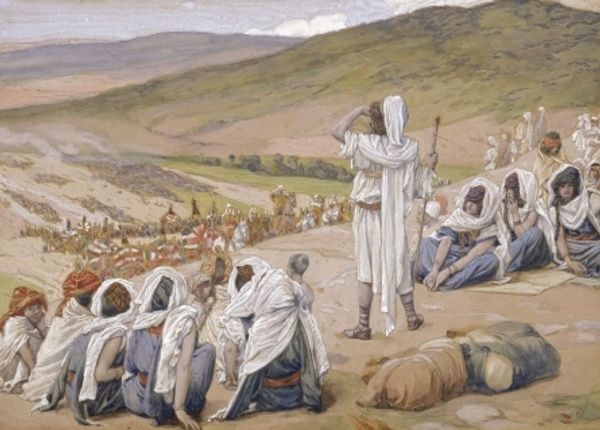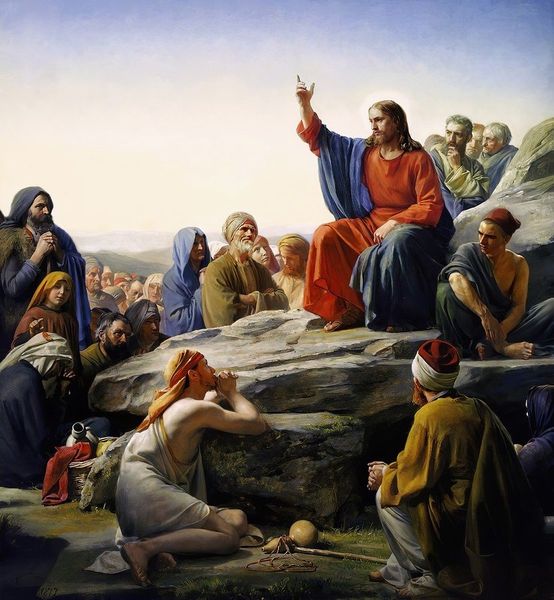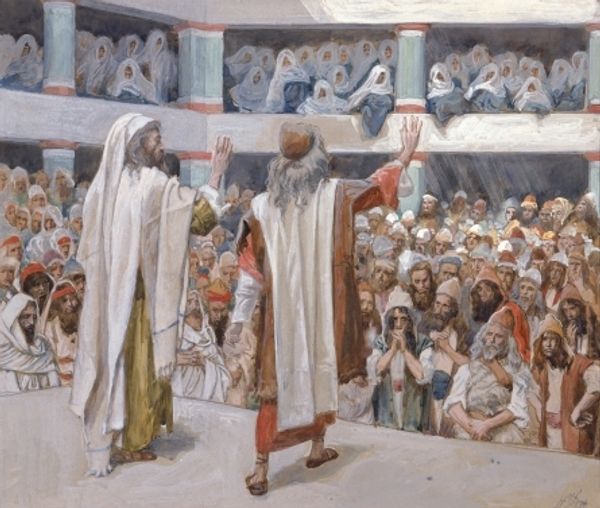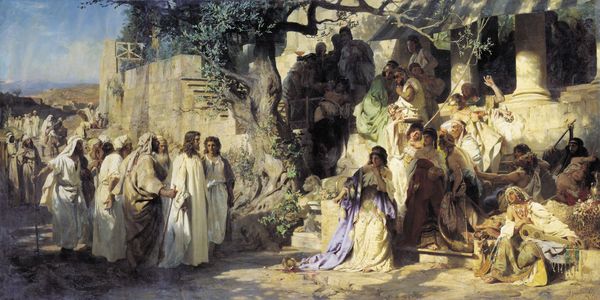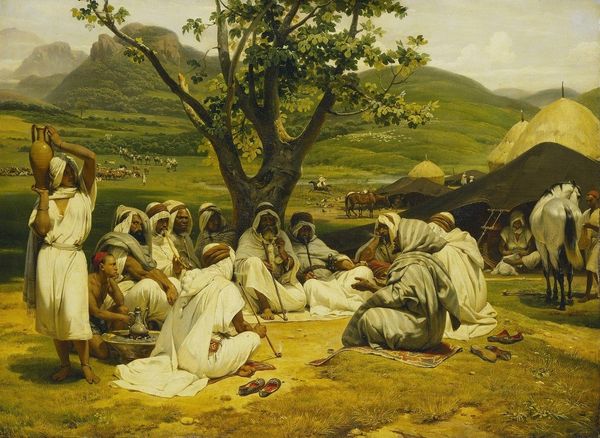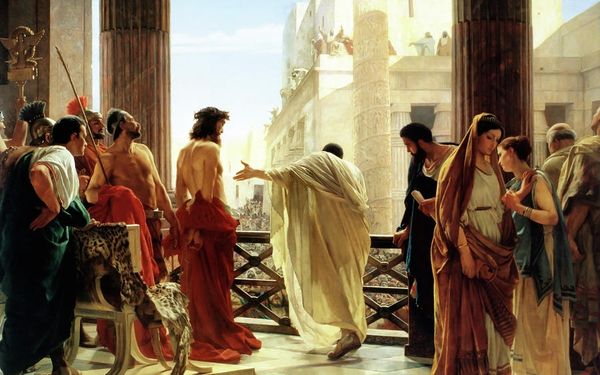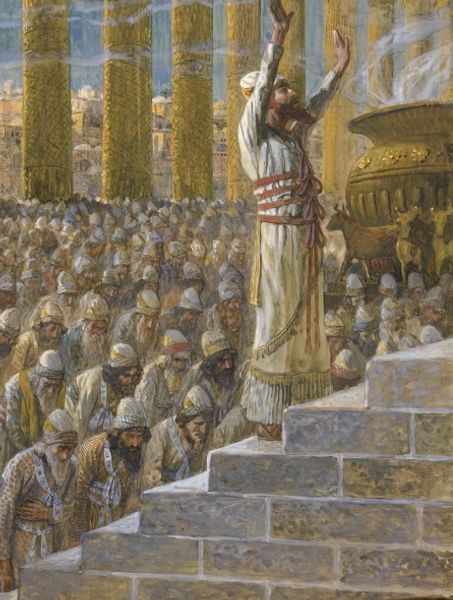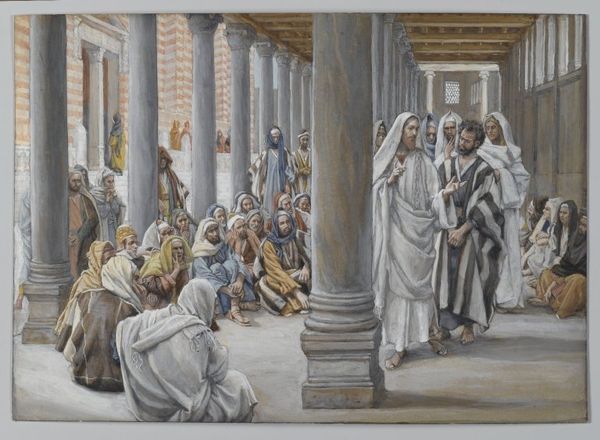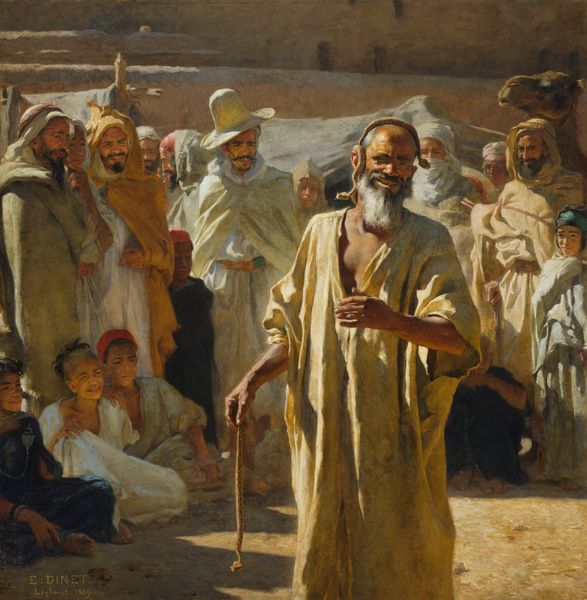
painting, oil-paint
#
narrative-art
#
painting
#
oil-paint
#
landscape
#
figuration
#
oil painting
#
portrait reference
#
orientalism
#
symbolism
#
genre-painting
#
history-painting
#
academic-art
#
portrait art
#
fine art portrait
#
realism
Copyright: Public Domain: Artvee
James Tissot made this painting, "The Lord's Prayer," with watercolor and gouache over graphite on paper. Tissot's choice to work on paper, rather than canvas, is a telling one. The surface has a subtle texture of its own, enhanced by the application of watercolor. This medium allows for layering, and building up tones to create subtle effects of light and shadow on the clothing of the people gathered around Jesus. We can see how the artist built forms carefully, hatching with fine strokes of his brush. This wasn't just a matter of taste; the relative affordability of paper allowed Tissot to produce a large number of these biblical scenes. There is also the dimension of labor. Tissot was interested in capturing scenes from everyday life. And though he took a more decorative approach to painting, compared to someone like Courbet or Millet, we see here the social relations of the Bible brought to life through a kind of serial production. Looking closely at the way these works are made offers a new way to understand their spiritual and cultural meaning.
Comments
No comments
Be the first to comment and join the conversation on the ultimate creative platform.
